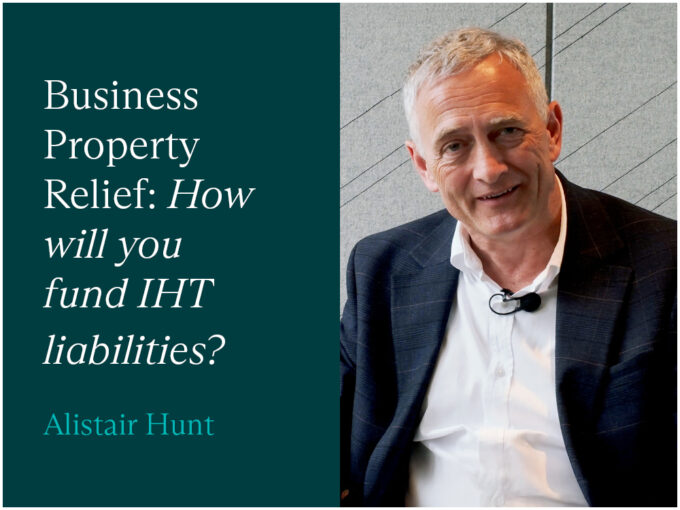Investors’ Relief offers a significant opportunity to reduce capital gains tax when investing in unlisted trading companies. However, navigating the rules, including the changes announced in the Autumn Budget 2024, and meeting the qualifying conditions can be challenging.
What is Investors’ Relief?
Investors’ Relief (IR) provides capital gains tax (CGT) relief for investments in qualifying shares of unlisted trading companies.
Investors’ Relief reduces the rate of CGT charged on disposals of qualifying shares subject to a lifetime limit. The relief is available to both individuals and trustees where certain conditions are met.
IR is intended to encourage and reward new investment over the medium to long-term and so there are conditions to ensure that new ordinary shares are subscribed for with new money that benefits the company and the shares are held for at least three years. The relief is targeted at external investors so will not usually be available where the investor, or an individual connected with them, is an officer or employee of the company.
Autumn Budget 2024 changes
Before 30 October 2024, Investors’ Relief lowered the rate of CGT on qualifying disposals to 10%, subject to a lifetime limit of £10 million of qualifying gains.
At the Autumn Budget 2024 it was announced that:
- For IR qualifying disposals made on or after Budget day (30 October 2024), the lifetime limit would be reduced to £1 million (taking into account the value of relief claimed in respect of qualifying disposals made before 30 October 2024 under the previous £10 million lifetime limit), and
- The rate of CGT applying to IR qualifying disposals will increase from 10% to 14% for disposals made on or after 6 April 2025, and from 14% to 18% for disposals made on or after 6 April 2026.
Anti-forestalling rules apply so that, subject to a few exceptions:
- Where there has been a share reorganisation before 30 October 2024, and the shareholder continues to meet the conditions for claiming IR on 30 October 2024 and makes an election after that date to disapply the CGT reorganisation rules (in order to claim IR), the disposal will be treated as taking place on the date the election is made, and will therefore be subject to the £1 million lifetime limit, and if the election is made on or after 6 April 2025 the new applicable CGT rate will apply (the new CGT rates will also apply where an election is made following a reorganisation on or after 30 October 2024), and
- Where a contract for sale is made from 30 October 2024 to 5 April 2026 and completed from 6 April 2025, the new 14% rate of CGT will apply.
Interaction with Business Asset Disposal Relief (formerly Entrepreneurs’ Relief)
IR works in a similar way to Business Asset Disposal Relief (BADR) and the increased tax rates announced at the Autumn Budget 2024 for IR also apply to BADR. They are separate tax reliefs (with a separate lifetime limit; the lifetime limit under BADR was reduced from £10 million to £1 million in March 2020) and there are no specific interaction provisions. Shareholders could be eligible for both IR and BADR, but only in very limited circumstances (eg unremunerated directors).
Unlike BADR there is no minimum shareholding requirement to qualify for IR, but there are various conditions that must be met to qualify.
Consideration should be given to the availability of both IR and BADR before any investment to gauge which of these reliefs may be available to investors.
For example, if an investor becomes a non-executive director (NED) of a company after their investment is made and it’s possible to structure the NED role so that the investor is not entitled to any payment for the provision of NED services, then it might be possible for the investor to claim the reduced rate of CGT up to £2 million under both IR and BADR.
Interaction with reliefs under the Enterprise Investment Scheme (EIS) and Seed Enterprise Investment Scheme (SEIS)
As IR is targeted at external investors, there is likely to be some crossover with EIS and SEIS tax reliefs.
The tax breaks will be more beneficial under EIS and SEIS eg there is a CGT exemption rather than a reduced rate of CGT, but as these reliefs have the same upfront criteria (there needs to be a subscription for new ordinary shares wholly in cash and fully paid up at the date of issue) then it might be possible for IR to apply to an investment that has failed to meet the ongoing EIS or SEIS qualifying conditions. IR could also potentially apply to an external investment that does not meet the stricter qualifying conditions for EIS or SEIS from the outset.
Qualifying conditions for Investors’ Relief
Some of the main conditions of IR are:
- The qualifying shares must be new unquoted ordinary shares acquired by subscription and were issued on or after 17 March 2016,
- The new ordinary shares must be subscribed for by the investor wholly in cash and must be fully paid up at the time of issue,
- The shares must be subscribed for and issued by way of a bargain at arm’s length, for genuine commercial reasons and not as part of an arrangement where one of the main purposes is to secure a tax advantage to any person,
- The company must be a trading company or holding company of a trading group throughout the ownership period (there is an 80% test to measure the company’s trading activities compared to its non-trading activities),
- The investor, or a person connected to the investor, cannot be an officer (eg director or company secretary) or employee of the company, or a connected company, at any time in the ownership period (except in very limited circumstances),
- The ordinary shares must be held by the investor continuously from subscription to disposal and the ownership period must be at least three years, and
- IR won’t be available if the investor (or an associate of the investor) receives value, other than insignificant value, from the company (or a person connected with the company) at any time in the period beginning one year before the date the shares were issued and ending immediately before the third anniversary of the issue date. The rules are wide-ranging and so any amounts intended to be paid by the company to the investor should be carefully checked to ensure they do not fall within these value received rules.
Where only some of the shares in a holding which are disposed of qualify for IR, any capital gain is pro-rated so that the gain on the qualifying shares attracts IR.
Investor relief rules
Special identification rules operate to preserve the maximum potential IR for future disposals, for example treating qualifying shares and excluded shares as disposed of in priority to any potentially qualifying shares held for less than three years. These identification rules are complex and care needs to be taken to ensure the capital gains matching rules are followed.
For IR to apply to a disposal made by trustees there must be at least one individual who is an eligible beneficiary and who has an interest in possession that includes the holding of shares immediately before the disposal and throughout the period of three years ending with the date of the disposal. In addition, the eligible beneficiary must not have been a relevant employee of the company. The trust gains qualifying for IR will utilise the lifetime limit of the eligible beneficiary and, as such, a joint election must be made between the trustees and the eligible beneficiary to claim the tax relief.
IR is not automatic and must be claimed. The time limit for making the claim is 12 months after 31 January following the end of the tax year in which the disposal took place.
How we can help
Even given the reduction in the lifetime allowance and the increased tax rates, Investors’ Relief is still a potentially valuable tax break for external investors looking to invest in unlisted trading companies over the medium to long-term. We can help you understand the complex rules, which should be considered at the time the shares are subscribed for and then regularly monitored.
For advice regarding any of the issues raised here, please get in touch with Zena Hanks.
Contact Us
Partner, Bristol
Key experience











